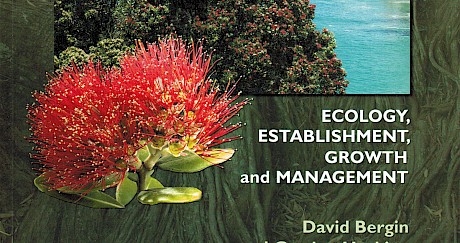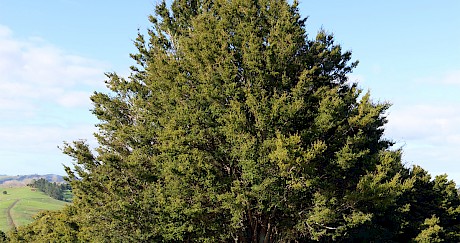Review of existing uses and market opportunities for farm-grown totara in NorthlandProject Status: Completed
This project funded by the Ministry of Agriculture and Forestry’s Sustainable Farming Fund reviewed existing uses and market development opportunities for naturally regenerating totara timber in Northland. The project was completed in 2011 and a report was produce documenting existing practical knowledge and experiences of those working with farm-totara, that is, totara trees that have naturally regenerated on private land (particularly farmland and scrubland) following bush-felling, clearances and pastoral farming activity over the past 150 years or so. This information helps highlight the critical issues and more specific opportunities and restraints to address in order to develop a viable industry. In addition, the information collated is of direct relevance and value to stakeholders interested in the management of naturally regenerating as well as planted totara stands for timber production.
Background
 Previous work by the Northland Totara Working Group has shown that a significantly resource exists in the region, with substantial capacity for further development, and marked responses to pruning and thinning have been demonstrated confirming the amenability of the species and resource for production forestry.
Previous work by the Northland Totara Working Group has shown that a significantly resource exists in the region, with substantial capacity for further development, and marked responses to pruning and thinning have been demonstrated confirming the amenability of the species and resource for production forestry.
Development of an industry based on the commercial-scale use of farm-totara is seen as a practical way to encourage the integration and sustainable management of this regenerating native tree species on private land within existing largely pastoral land use. This vision is aligned to broader policy goals of weaving resilience and sustainable land management practices into productive landscapes nationwide. There is potential for the productive use of naturally regenerating totara to play a very significant role in enhancing many environmental and landscape values – particularly in marginal pastoral hill-country where afforestation is an appropriate landuse.
Objectives
The overall objective of this project was to investigate the current use of naturally regenerating totara and to explore market development opportunities. More specifically, the project aimed to:
- Survey recent, current and potential future uses of naturally regenerating totara timber.
- Document practical experiences and knowledge about the felling, extraction, milling, drying, handling, working and finishing of farm totara.
- Perceptions of stakeholders about the potential uses and markets for regenerating totara and its relative position in the timber market.
- Survey selected stakeholders’ perceptions about legal issues and use of native timber generally.
Methodology
The project sought to capture the wealth of practical knowledge and experience that already exists through a targeted survey of experienced people and key industry stakeholders. Seven key stakeholder groups were identified:
- Landowners and others who have had experience with milling and/or using totara timber, but not at a commercial scale.
- Portable saw-millers and timber merchants with commercial experience.
- Wood processors, furniture makers/manufacturers, joiners and cabinet-makers etc. who have used or do use regenerating totara timber.
- Wood processors, furniture makers/manufacturers, joiners and cabinet-makers etc. who do not use regenerating totara timber.
- Architects, architectural designers and interior designers.
- Scientists and researchers involved with forestry, wood-quality and wood processing; and g) carvers who have had experience in using regenerated totara timber for cultural purposes.
The survey successfully engaged the participation of a wide variety of very experienced stakeholders.
Results
The results of the project are set out in a report posted on the Tāne’s Tree Trust and NZ Landcare Trust Web-sites (Quinlan 2011). A summary of findings was compiled for the NTWG Newsletter 2011. The Executive Summary of the full report highlighted the following:
- Timber from regenerated farm-totara was often from trees estimated to be between 50 and 120 years old, but mostly from around 80-100+ year old trees. Many participants also had experience with older trees estimated to be often well over 200 years old. Saw-millers generally consider farm-totara to be a very easy timber to mill. It is considered to be a relatively easy timber to air-dry, but many craftsmen recommend ‘finishing it off’ in a drying kiln or dehumidifier before use. Recommendations for drying are for a long slow process with little or no heat. Inconsistency of timber grading is a systemic problem that needs addressing.
- Farm-totara is considered to be a very good timber to work. It machines very well. Some people have found the dimensional stability of totara from younger regenerated trees to be less consistent than that of old-growth totara timber. Gluing did not appear to be a significant issue. Some problems have been experienced with applied finishes to totara timber, particularly the heartwood. However, a range of satisfactory finishing products and procedures now exist.
- Farm-totara has been used for a huge range of applications. Generally, people have been well-pleased and satisfied with the performance of farm-totara timber. Many participants consider totara sapwood to be relatively more durable than most other sapwood timbers and to be more resistant to the common house borer. Most have not experienced any kind of durability issues with untreated use in interior situations. Totara sapwood can be very successfully treated with CCA treatment. Carvers prefer well-seasoned heartwood from old-growth trees, but consider farm-totara to be a very good timber for carving.
- There was overwhelming support from all stakeholder groups for the promotion of the use of farm-totara timber and development of an industry around this naturally regenerating resource. Farm-totara is definitely considered to have potential in the market place. The timber was generally rated “above average” in respect to its appearance and visual appeal. Opinions generally place its market position to be “cheaper than rimu and kauri but more than Macrocarpa.” This indicates that farm-totara should be a relatively valuable specialty timber.
- Interior linings, finishings, joinery and furniture are clearly indicated as being the main target markets for farm-totara timber. Most timber merchants, cabinet-makers, carvers and architects indicated interest in purchasing farm-totara if a reliable supply and continuity of suitable grades was available. Architects and designers indicated a clear preference to specify/use timbers from sustainably managed New Zealand indigenous forests above any other source. Harvesting regenerating farm-totara is perceived as being more ecologically acceptable to the consumer. This may provide a marketing ‘point of difference’ from other native timbers. Other sustainability issues, particularly with regard to continuity of supply, are considered to be very important by stakeholders.
Conclusions
The results clearly indicate that the timber from relatively young naturally regenerated totara trees of farmland has been widely used. It is considered to be an excellent native softwood timber, relatively easy to mill, dry, work and finish. It is considered to be suitable for all interior uses, particularly feature linings, joinery and furniture.
All stakeholders consider that farm-totara has very good market potential and they support the initiatives of the Northland Totara Working Group to promote its use and the development of a sustainable commercial industry around it.
While the inherent quality of the timber has been confirmed, some potential constraints to the development of an industry were identified. These are generally supply-chain and marketing issues as well as information gaps but the project has provided insights into the direction of further research and activity for the group.
Project Outputs
The final project report:
Quinlan, P. 2011: Existing uses and market development opportunities for naturally regenerating totara timber. Northland Totara Working Group report for the Ministry of Agriculture and Forestry’s Sustainable Farming Fund SFF Project L10/145. 98p. View PDF document
Other outputs include:
- Presentation by Paul Quinlan titled: The developing totara resource. Delivered to over 100 Architects and Foresters at ASIF/NZIA CPD Wood Properties Seminar. Unitec Auckland. 22nd February 2011.
- Conference Paper prepared and presented the joint Australia and New Zealand Institute of Forestry (ANZIF) conference, Auckland, 1-3rd May 2011 entitled: Promoting the management of a naturally regenerating native forest resource for commercial timber production. A case-study based around Podocarpus totara. Paul Quinlan, David Bergin, Ian Barton and Peter Berg, Tāne’s Tree Trust.
- NTWG Newsletter article 2011.
Visit the Publications page for PDF documents.
Contacts for this project
- Project Manager, Paul Quinlan
- TTT Executive Officer: Enable JavaScript to view protected content.




